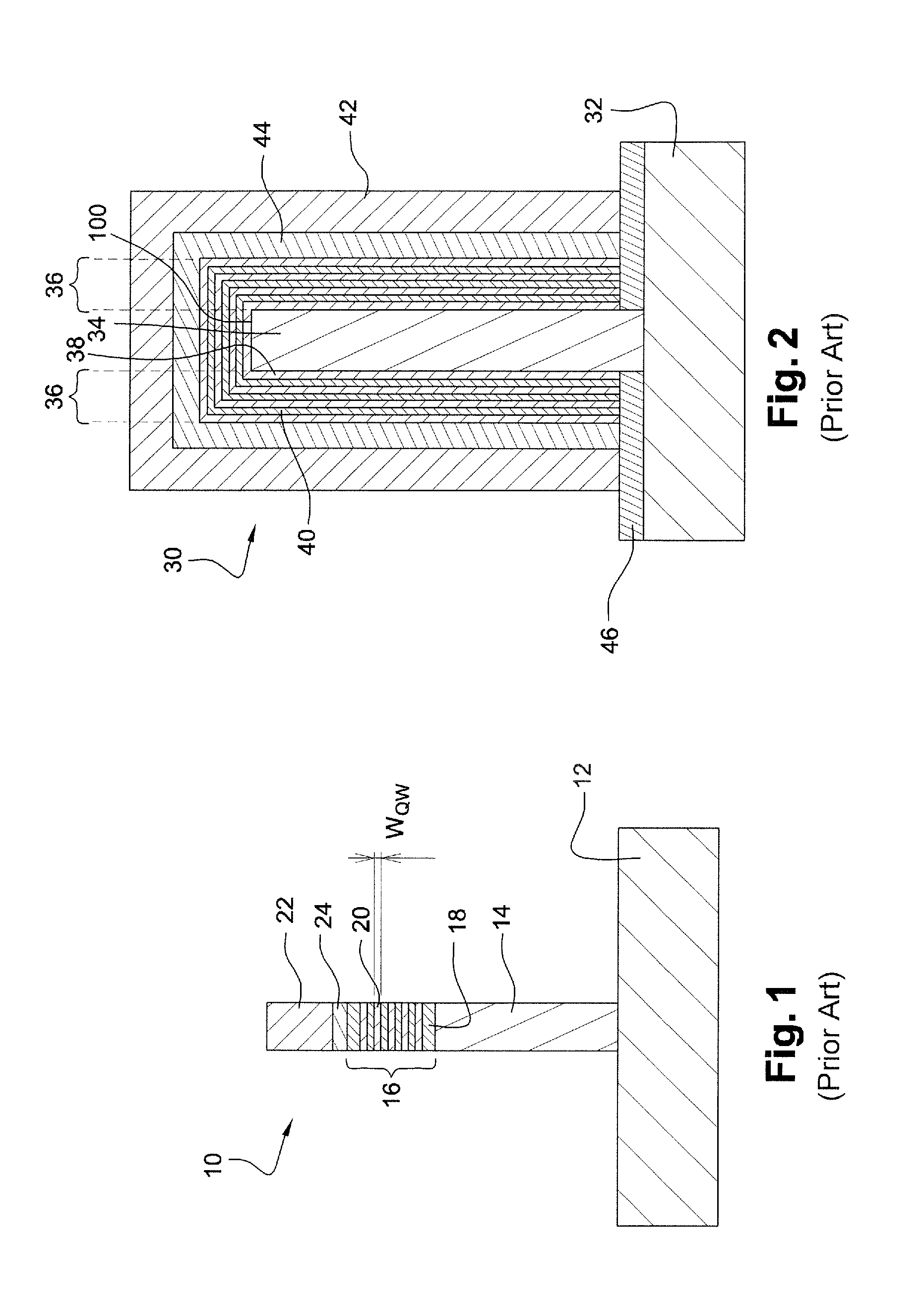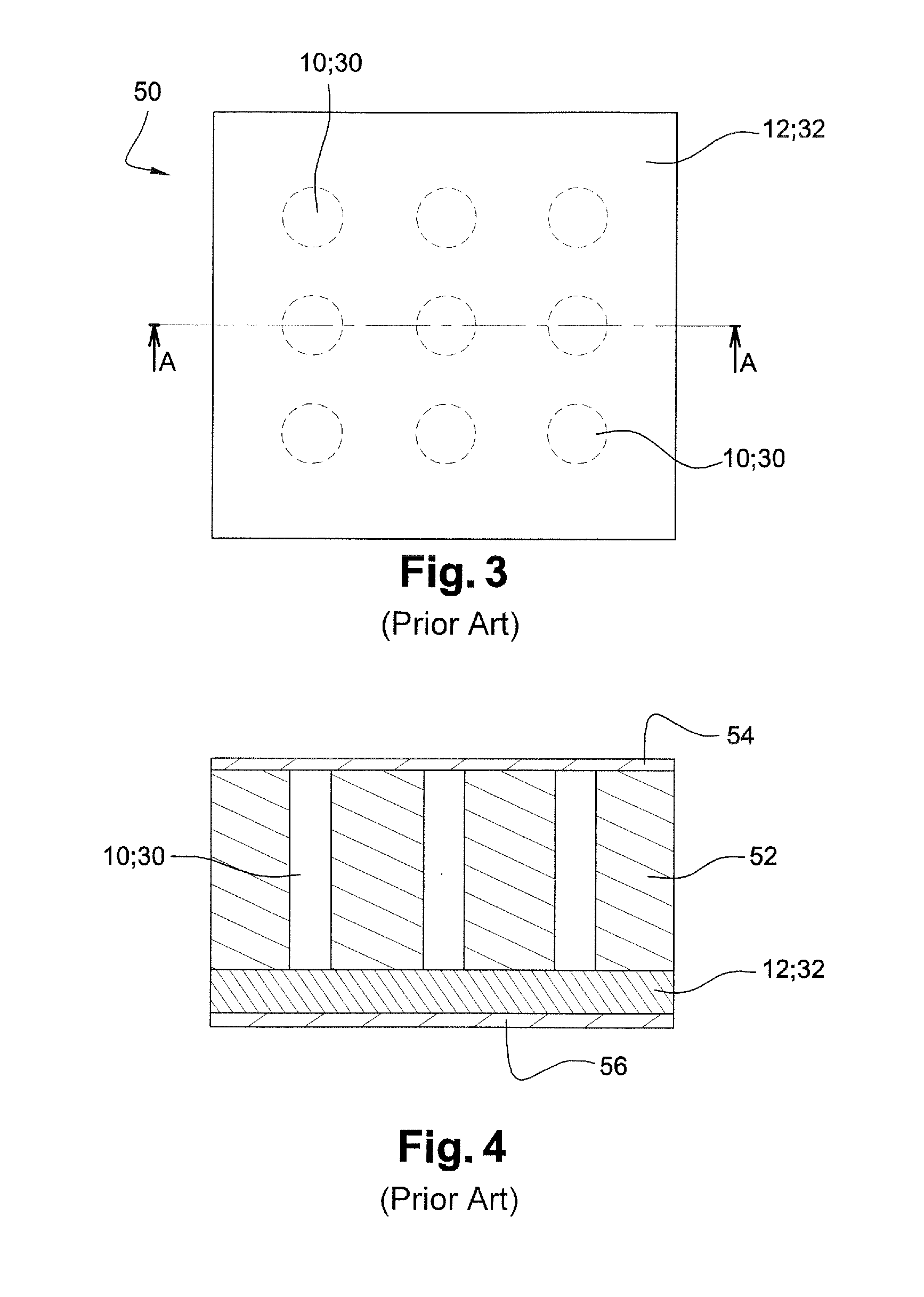In-series electrical connection of light-emitting nanowires
a technology of light-emitting nanowires and series connections, which is applied in the direction of electrical apparatus, semiconductor/solid-state device manufacturing, and semiconductor devices. it can solve the problems of connecting nanowires, and achieve the effect of no efficiency droop, good confinement of charge carriers
- Summary
- Abstract
- Description
- Claims
- Application Information
AI Technical Summary
Benefits of technology
Problems solved by technology
Method used
Image
Examples
first embodiment
[0097] connection nanowire 82 is made of an electrically-conductive material. For example, connection nanowire 82 is metallic, which enables to obtain both a connection of high quality and a perfect compatibility with any type of nano-LED, whatever the materials and the structure of the hole and electron injection areas.
[0098]This however has the disadvantage of complicating the manufacturing process of an array of nano-LEDs since two types of manufacturing processes have to be provided, one for the nano-LEDs and the other for the connection nanowires.
second embodiment
[0099] the connection nanowire is a nano-LED which has then been modified be used as a connection nanowire. This enables to manufacture all the nanowires, nano-LEDs, and connection nanowires, during a same growth process.
[0100]An application of the second embodiment to the core / shell nano-LEDs of FIG. 2 is now described in relation with FIGS. 6a, 6h, and 6c.
[0101]A nano-LED 30 is thus modified to remove a portion of shell 42 from head 84 thereof, and especially at least the portion of shell 42 covering upper surface 100 of core 34 of the nano-LED. This thus disengages core 34, which is electrically compatible with shell 42 forming a hole injection area of nano-LEDs 60, 62, and which is covered with first area 86 of the series connection, for example, a metal contact 86.
[0102]In the example illustrated in FIG. 6a, the top of nano-LED 30 has been removed to disengage core 34 while leaving in contact active area 36, as well as volumes 42 and 44, with conductive area 86.
[0103]In the ex...
PUM
 Login to View More
Login to View More Abstract
Description
Claims
Application Information
 Login to View More
Login to View More - R&D
- Intellectual Property
- Life Sciences
- Materials
- Tech Scout
- Unparalleled Data Quality
- Higher Quality Content
- 60% Fewer Hallucinations
Browse by: Latest US Patents, China's latest patents, Technical Efficacy Thesaurus, Application Domain, Technology Topic, Popular Technical Reports.
© 2025 PatSnap. All rights reserved.Legal|Privacy policy|Modern Slavery Act Transparency Statement|Sitemap|About US| Contact US: help@patsnap.com



